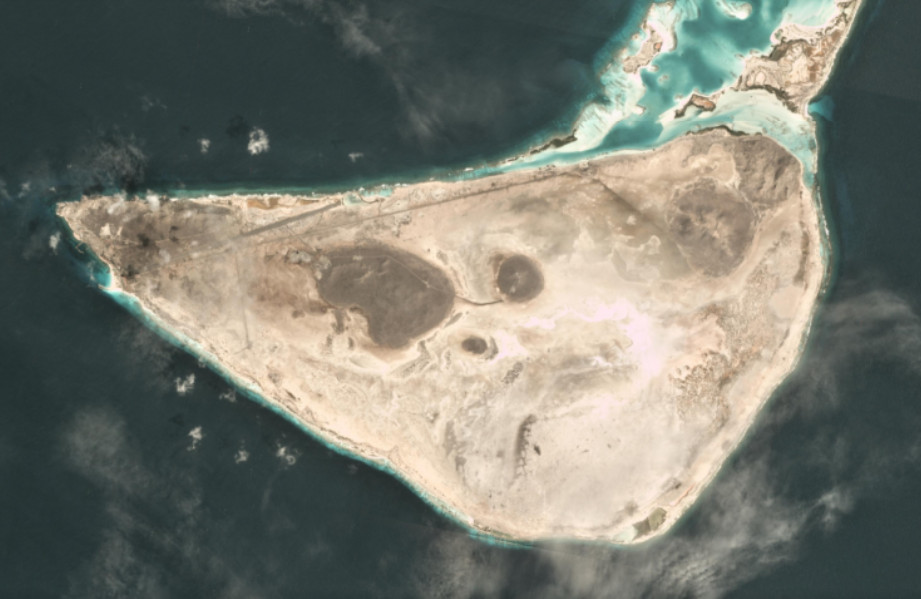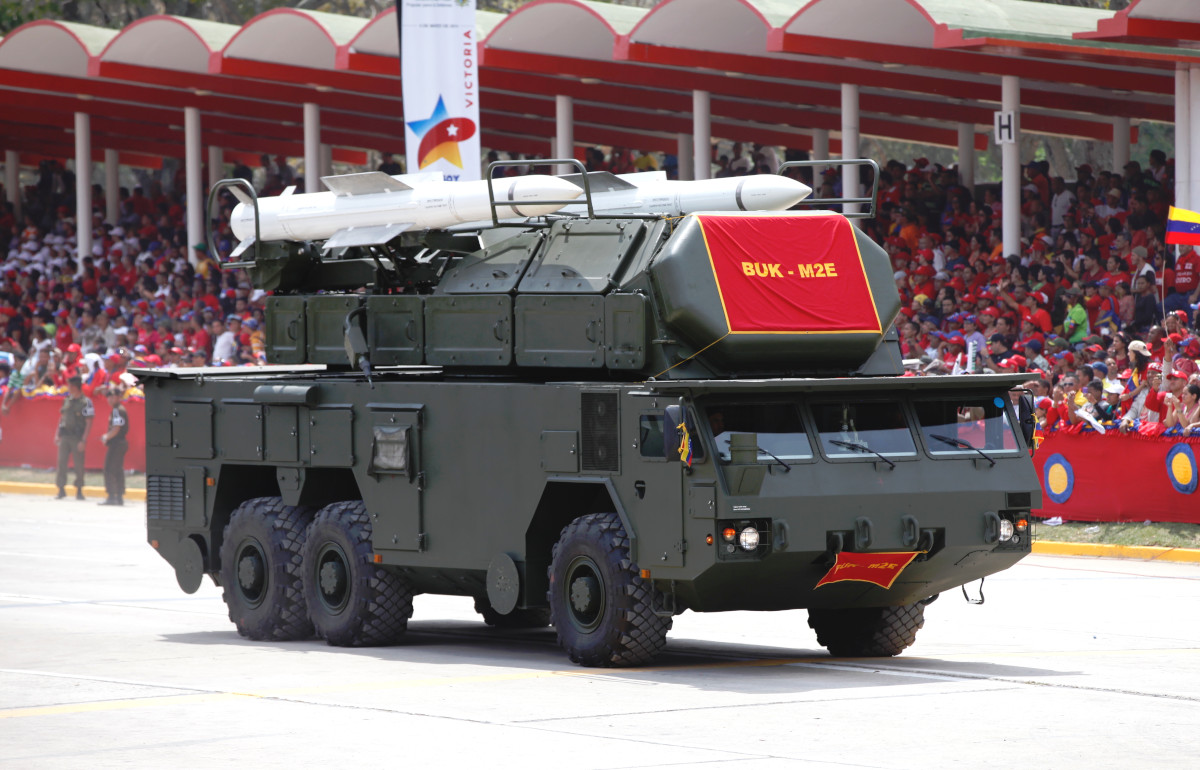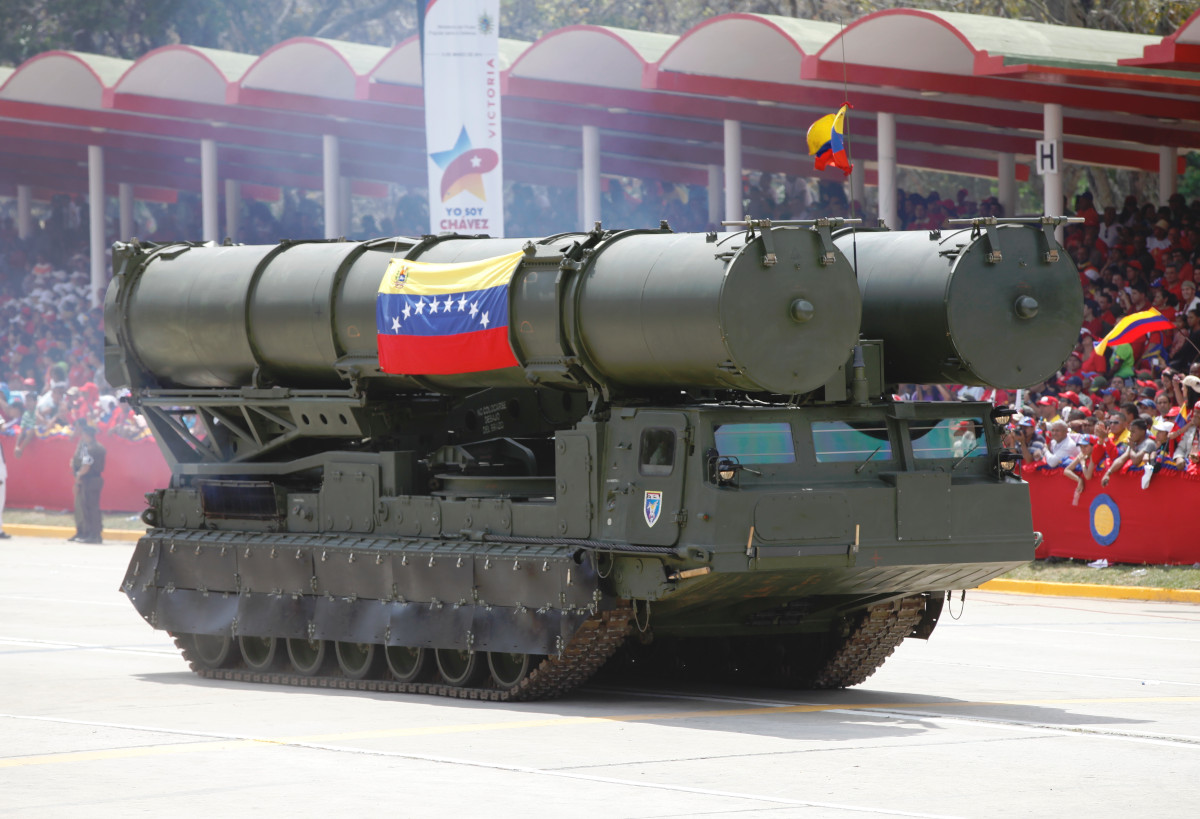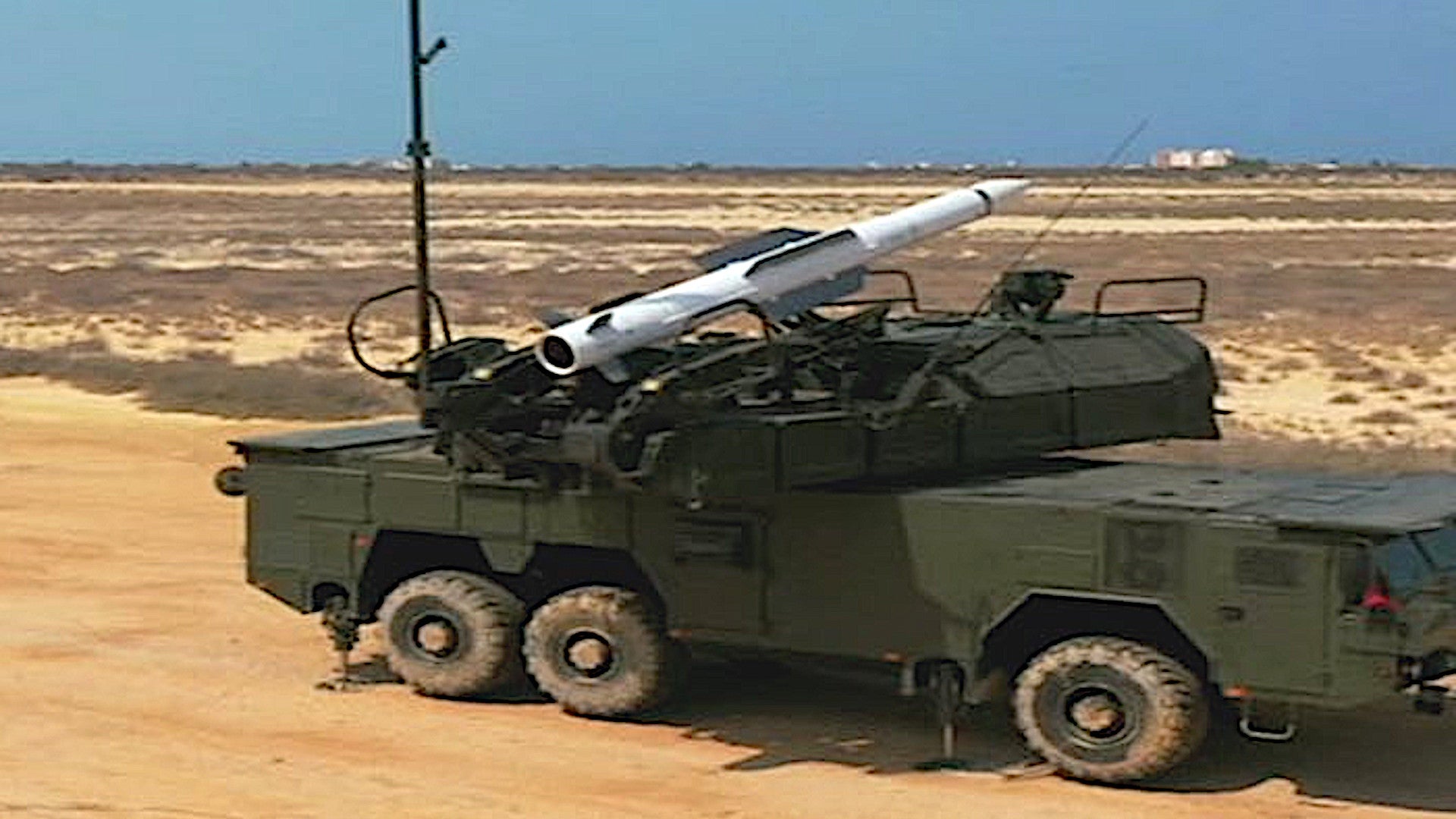The Venezuelan military has sent a contingent of forces, including at least one of its Russian-made Buk-M2E surface-to-air missile systems, as well as BM-21 Grad and BM-30 Smerch artillery rocket launchers, to conduct exercises on the island of La Orchila off the country’s coast in the Caribbean Sea. This propaganda show of force comes as the regime of dictatorial President Nicolas Maduro has pledged to escort five Iranian tankers carrying approximately 1.5 million barrels of gasoline safely into port in Venezuela, vowing to block any attempts by the United States to seize the ships on the high seas.
Video and pictures of the Russian-made weapon systems on Isla La Orchila first emerged on May 22, 2020. Maduro subsequently announced the drills during a televised meeting with top military commanders in Caracas. He further framed them as part of a broader effort, dubbed Bolivarian Shield, to improve the country’s ability to respond to any foreign aggression, which officially began in February.
“We witnessed military exercises … on the island of La Orchila, with the test of the most precise missile systems for the defense of waters and coasts,” Maduro said. “We were testing the Russian Buk missile, absolute precision …, a powerful missile.”
Ship spotters, using online tracking software, had already noticed the Venezuelan Navy’s AB Los Roques, a Dutch-built Damen Stan Lander 5612 logistics support craft, make a curious trip to the island on May 18 under escort from the first-in-class patrol boat AB Guaiqueri.
The Los Roques has a landing craft style drop-down ramp at the bow and a large open cargo area in the middle that could easily accommodate heavy military vehicles, such as the Buk-M2E, BM-21, and BM-30. That the Venezuelans sent the Guaiqueri along to escort it makes it even more likely that it delivered these vehicles to La Orchila for this snap exercise.
This show of force appears to be very limited and it’s unclear how these forces might at all contribute to deterring any attempt to detain the Iranian tankers heading toward the country. La Orchila, which has served primarily as a presidential retreat in recent years, is around 100 miles northeast of Venezuela’s capital Caracas and has no facilities on it for the tankers to offload their fuel there. It is home to a small military outpost with a single runway and limited dock facilities, which you can read about more in this past War Zone piece.

The Buk-M2E is a medium-range surface-to-air missile system and has a maximum engagement range, under the best conditions, of just under 30 miles. Venezuela’s longer-range S-300VMs, which it also bought from Russia, are notably absent and have been in a questionable state of readiness in recent years, in general. There were reports last year that the Kremlin was trying to help the Venezuelans rehabilitate their S-300VMs, among other advanced Russian-supplied weapons.


The BM-30s can fire its 300mm rockets out to around 56 miles, but those weapons, as well as the shorter-range BM-21s with their 122mm rockets, are unguided and ill-suited for engaging maritime threats. It’s not clear how forces on La Orchila would even spot potential targets out to sea, to begin with.
The video below Venezuela’s BM-21s and BM-30s in action during an exercise in 2014.

The Venezuelan armed forces do not have any land-based anti-ship missiles, which would pose a greater potential threat to any American warships that might be in the area and posied to board any of the Iranian tankers. They do have a limited number of Russian-made air-launched Kh-31s for their Su-30MK2 Flanker fighter jets and may still have some Franco-Italian Otomats for the Mariscal Sucre class frigates and Federacion class fast attack craft.
Of course, the deployment does reflect how the Venezuelan military might look to defend the strategic island itself from any attack in the future, unrelated to the approaching Iranian tankers. La Orchila could be an attractive initial staging location for a potential adversary looking to invade Venezuela, something Maduro’s regime regularly says the United States is preparing to do, though there is no hard evidence to support those claims. However, Maduro did just recently face a bizarre botched coup attempt, which a former U.S. Army green beret, Jordan Goudreau, helped organize. You can read more about that embarrassingly amateurish affair in detail in this past War Zone explainer.
Whatever the exact motivations, the entire exercise seems primarily intended for domestic audiences and to bolster the image of Maduro’s regime, as has been the case with other notable demonstrations the country’s martial power in the past. If it was truly meant to be a deterrent of any kind, it’s not clear if it has had the intended effect, with the U.S. Navy’s Freedom class Littoral Combat Ship USS Detriot also appearing in international waters just off Caracas yesterday.
It remains to be seen whether or not the United States, or any of its regional allies and partners, decides to make an attempt to detain any of the Iranian tankers or otherwise block them from reaching Venezuela. The governments in Tehran and Caracas are both subject to an extensive array of sanctions, especially on their respective petroleum industries, and specifically target Iranian oil and gasoline exports, among others.
A Pentagon spokesperson told Fox News on May 21 that they were “not aware” of any planned operation to stop any of the tankers, but that could very well change on short notice, if the public affairs office were even to be informed beforehand. Typically, the U.S. military does not comment on ongoing or potential military operations.
In April, the U.S. military did launch a new counter-narcotics operation in the region, focused primarily on Venezuela, which means there are additional forces in the region that are well suited to conducting surveillance of target ships and launching visit, board, search, and seizure operations.
“We’ve got it [Venezula] surrounded, it’s surrounded at a level that nobody even knows, but they know,” U.S. President Donald Trump said on May 20. “We are watching to see what happens.”
The five Iranian-flagged tankers – the Clavel, the Forest, the Faxon, the Fortune, and the Petunia – began to leave Iran last week. The lead tanker, Fortune, is now around two days away from arriving in Caracas.
Sanctions and years of political and economic instability have led to an acute gasoline shortage in Venezuela, which also comes as the COVID-19 pandemic is impacting the country. Even just blocking the gasoline deliveries from Iran could put new pressure on Maduro’s regime, which has been locked in a protracted dispute for more than a year now with opposition leader Juan Guaido, who the United States supports. This could increase the incentive for the U.S. government to act.
At the same time, blocking the gasoline could increase hardships on average Venezuelans, which Maduro already routinely blames on outside forces, including the actions of the United States, and hand the government in Caracas a propaganda victory. The U.S. government has already had to deal with the fallout from a recent and bizarre botched coup attempt that a former U.S. Army green beret, Jordan Goudreau, helped organize, an embarrassing amateurish affair that you can read about in more detail in this past War Zone explainer. Two other Americans are now in Venezuelan custody and the U.S. government is investigating Goudreau. This incident may also be tied to an equally curious and still largely unexplained altercation in March in which a Venezuelan patrol ship sunk itself after ramming into an ice-capable cruise liner.
Seizing or otherwise interfering with the movement of the Iranian tankers would very likely prompt some form of retaliation from the regime in Tehran. Iran’s Islamic Revolutionary Guard Corps (IRGC) did follow through with a threat to seize a British-flagged tanker in response to the impounding of the Grace 1 last year. The IRGC has also been implicated in a host of maritime incidents in the past year or so, including, most recently, harassing U.S. Navy vessels in the Persian Gulf in April. That incident prompted that service to issue a new public notice this week warning about the inherent risks of these kinds of alternations. Iranian forces and their proxies in the Middle East also regularly launch attacks on American military and diplomatic posts, as well as targeting U.S. allies and partners, in that region.
All told, it’s unclear what course of action the United States might pursue now with regards to the approaching Iranian tankers. By every indication, though, the Venezuelan forces on La Orchila are unlikely to play any meaningful role in what comes next.
Update: 6:15 PM EST—
The Venezuelan military has released video footage of the exercise on La Orchila that shows that the stationary tanker served as the target for the BM-21 Grads and BM-30 Smerchs. There is no indication that the rocket launchers were able to sink the ship and the video clip shows how inaccurate the rockets would be against such a target at even modest ranges and when it’s not moving.
Another video clip also shows that some of the Venezuelan military’s Russian-made Pechora-2M surface-to-air missile systems, as well as 23mm Zu-23 anti-aircraft guns, also took part in the drills, which appears to have included live-firing the missiles against small drones. P-18 and Low Blow radars were also present. Observers noted that footage of troops using 9K338 Igla-S Man-Portable Air Defense Systems (MANPADS) appeared to be old and unrelated to the exercises on La Orchila.
Update: 7:40 PM EST—
Geolocation of the videos now indicates that only the BM-21s and BM-30s actually went to La Orchila. The Buk-M2Es and Pechora-2Ms were deployed to the Paraguana Peninsula, which is situated much further to the west in Venezuela’s Falcon State.
Contact the author: joe@thedrive.com
